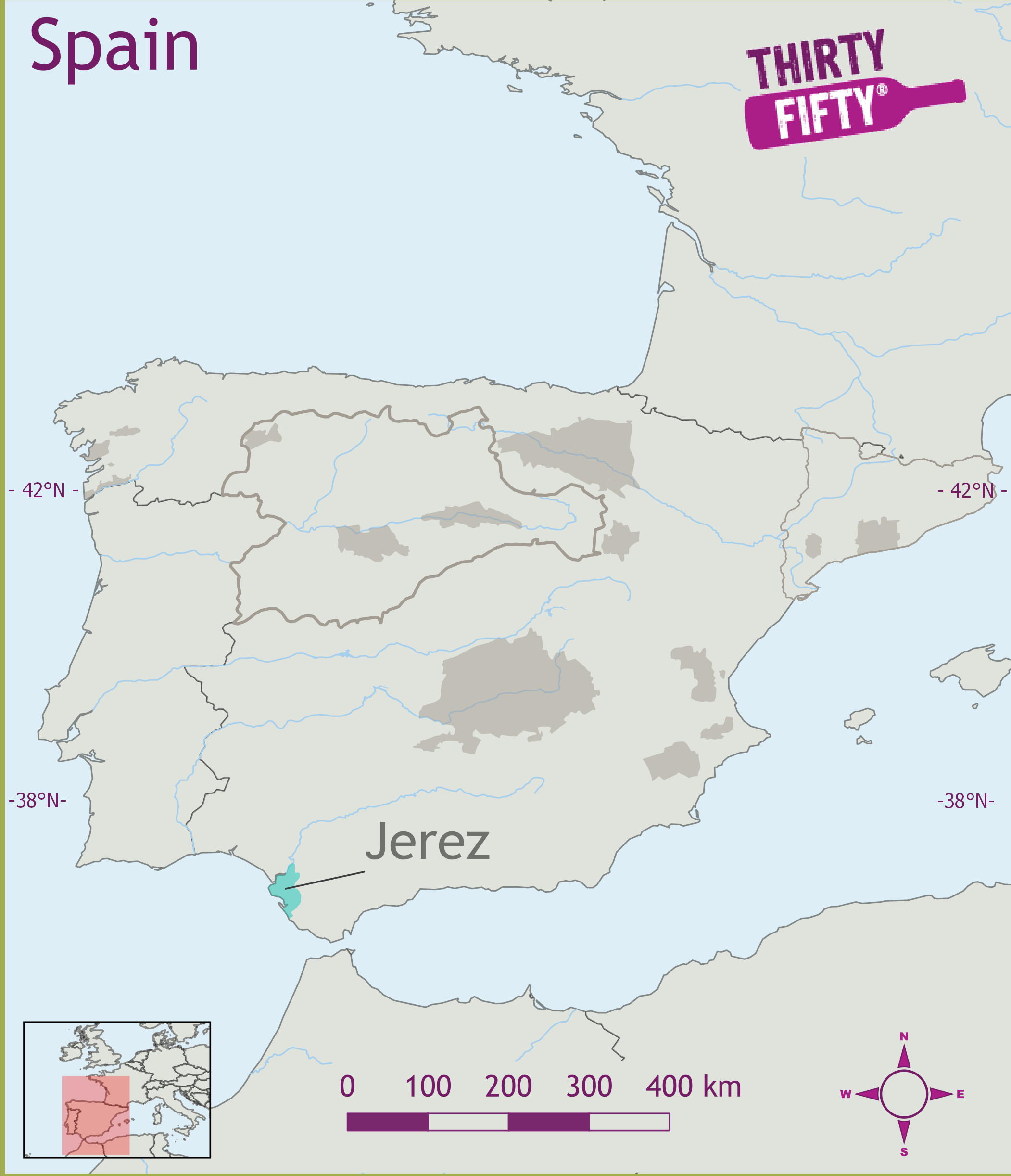Sherry sales halve in the UK over 15 years
Sales of sherry in the UK have gone from around 210,000 hectolitres in 2002 to around 100,000hl in 2014. Read more »
BOOKINGS: 020 8288 0314
PDO's & PGI's

Jerez, or to give it its full name Jerez de la Frontera, is one of the oldest wine-producing towns in Spain and the centre of the sherry industry. It’s also the name of the DO, which produces this fortified wine. This DO is a triangular area in southwest Andalucia extending from the town of Chiclana de Frontera in the southeast to the Guadalquivir river in the northwest and tapering inland. Within this DO, there are three centres for sherry maturation – Jerez de la Frontera, Sanlucar de Barrameda and Puerto de Santa Maria, each of which imparts its own subtle differences to the wine.
The region’s climate is strongly influenced by the Atlantic, and sea breezes from the gulf of Cadiz temper extremes in the coastal Sanlucar de Barrameda and Puerto de Santa Maria – in summer temperatures may be 10°C lower here than in Jerez inland, where they are often 30°C, or occasionally even 40°C as a result of the dry, dusty levante wind. It is thanks to the porous white albariza soil that the vines manage to survive the hot dry summer months. The best albariza soils, which include sand and clay and some limestone on the surface, cover rolling country north of the Guadalete river, between Jerez and Sanlucar de Barrameda, and the areas with them are known as Jerez Superior. In between the albariza soils are the more clay-heavy barro soils, which produce fuller, coarser wines, and the sandy arena soils, which produce double the yields but poor-quality wine.
The region produces a variety of styles of sherry from three authorised grape varieties: Palomino, Pedro Ximenez and Muscat of Alexandria. Sherry, by the way, is simply an English corruption of the Spanish word.